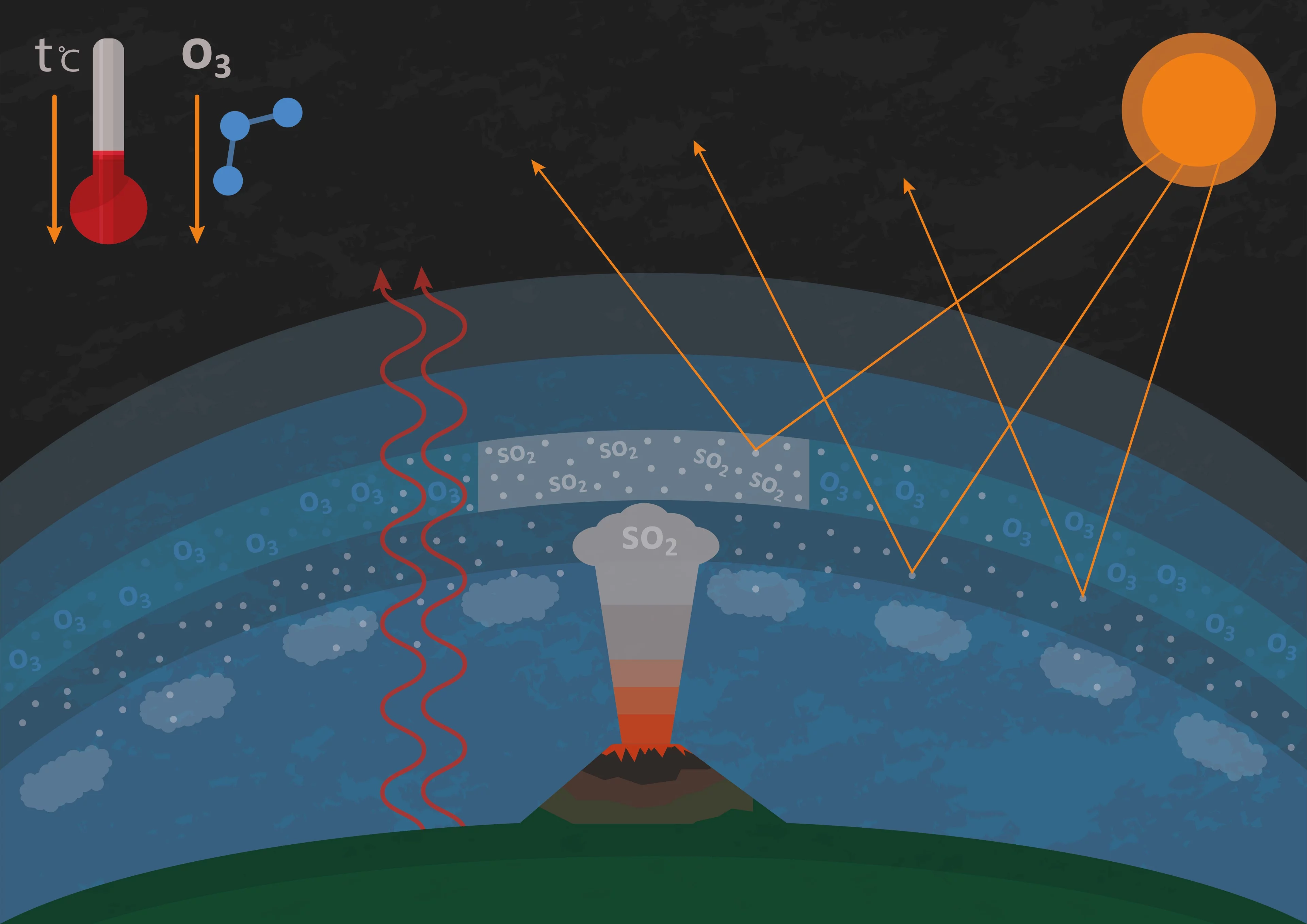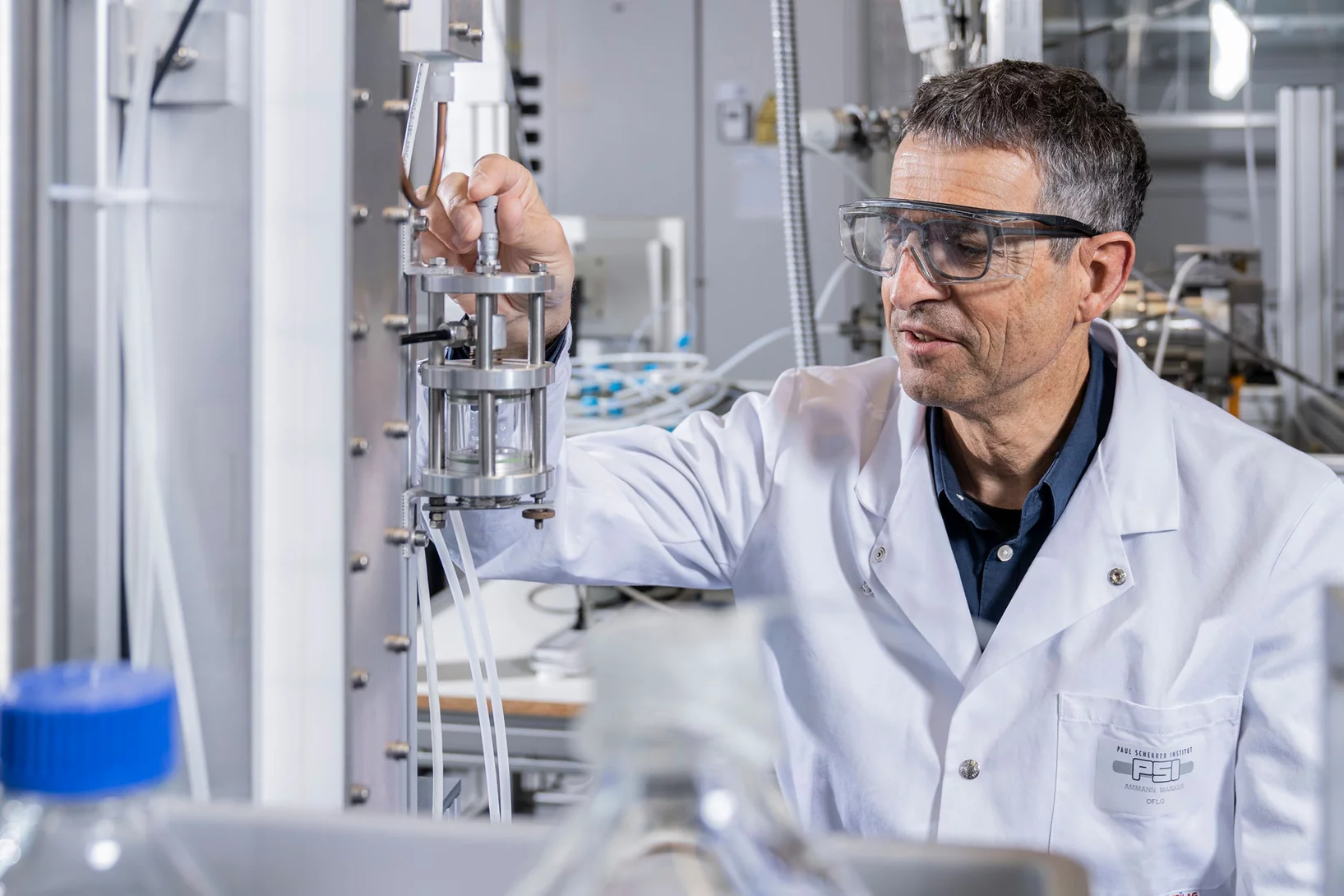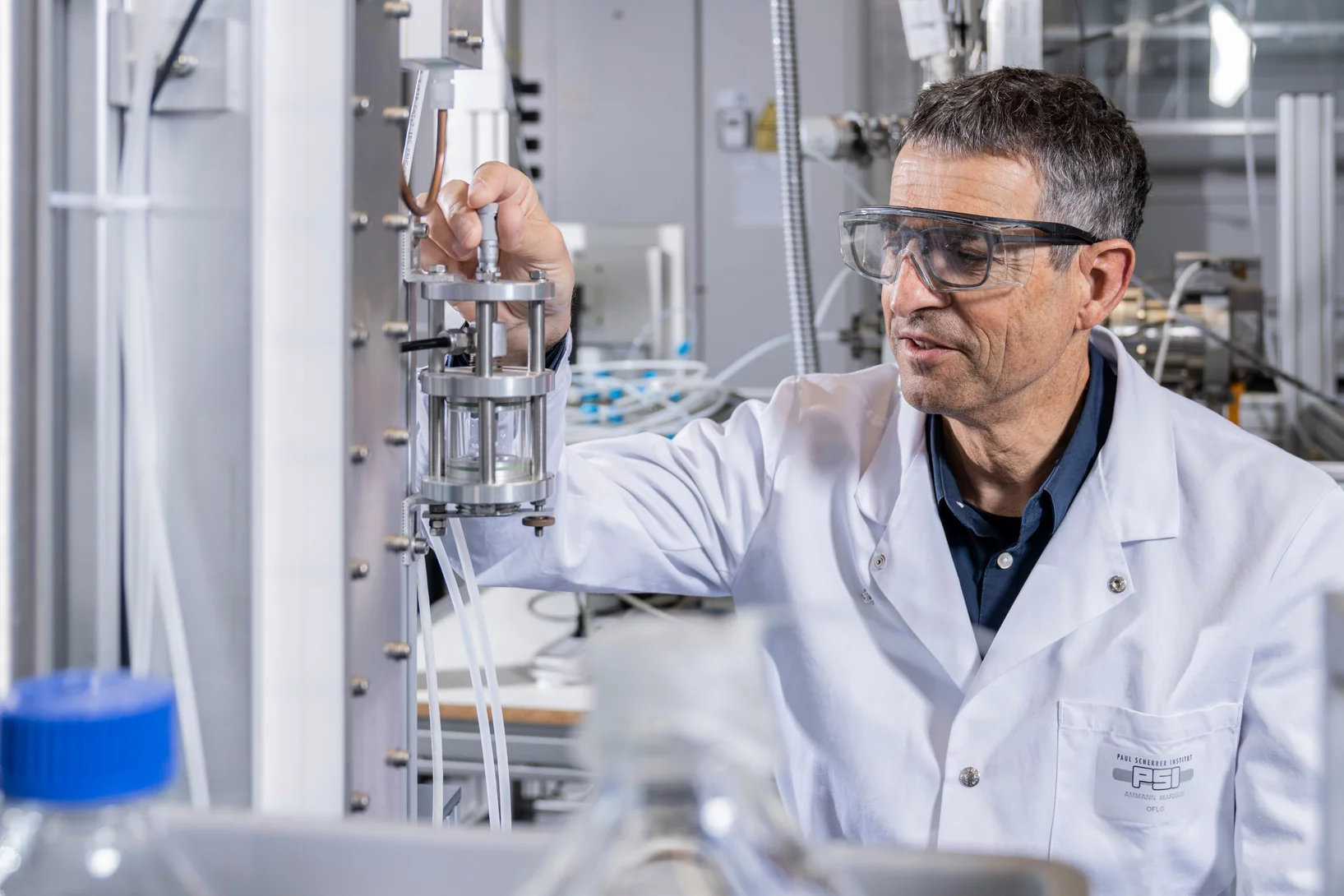Markus Ammann, head of the Multiphase Chemistry research group at the Paul Scherrer Institute PSI and adjunct professor of atmospheric chemistry at ETH Zurich, ranks considerations regarding the use of so-called geoengineering to put the brakes on climate change and explains what the Swiss Light Source SLS has to do with it.
In discussions of measures to address climate change, a concept that comes up again and again is geoengineering, a collective term for targeted interventions in the climate system. One such method, for example, is the injection of aerosols, tiny droplets or particles, into the stratosphere, the atmospheric layer above an altitude of around 15 kilometres. With this so-called solar geoengineering, sunlight would be scattered by the aerosols, and that could cool the earth’s surface. The use of this method is controversial, though, because the consequences of such an intervention can’t yet be estimated accurately.
Mr. Ammann, the idea of distributing aerosols in the stratosphere to stop global warming sounds bold. Can something like this even work?
It is known that volcanic eruptions have a demonstrable cooling effect on the global temperature. Sulphur oxides that are thrown into the stratosphere by violent eruptions are responsible for this. Chemical reactions produce tiny droplets that scatter back some of the incoming solar radiation, thereby cooling the earth’s surface. The 1991 eruption of the Pinatubo volcano in the Philippines lowered the global temperature by 0.5 degrees in the following year. Five years later, it had already returned back to normal.
So, it is theoretically feasible to transport particles into the stratosphere with aircraft, weather balloons, or rockets and thus stop global warming, at least in the short term. As the case of the Mount Pinatubo eruption shows, the temperature would return to normal, and you would have to keep on sending particles up there.
If it’s been proven to work, why does discussion of adopting such an approach always spark criticism?
The criticism is mainly because this unknown technology poses too many risks without offering a “real solution” for the climate. In addition, there are fears that even discussing the possibility of such an application might stop all efforts to curb greenhouse gas emissions. Some may say, for example, “Why should I do without my combustion engine? The climate can be regulated with geoengineering.”
What are the possible dangers of solar geoengineering?
The main problem is the big unknowns. The stratosphere is extremely complex, as is its influence on our climate. If you turn one cog in the machine just the slightest bit, it could trigger a chain reaction with unforeseen consequences. For example, solar geoengineering has the potential to influence the monsoon, the large-scale tropical and subtropical air circulation that, among other things, determines seasonal precipitation. In turn, the nourishment of billions of people depends on this. A change in this system could have fatal consequences. The problem with such theories is that they are difficult to prove because of the scarcity of data. The chemical processes in the stratosphere are difficult to imitate in the laboratory. Incorrect experimental conditions can make simulations even more inaccurate and ultimately lead to predictions that could just as easily be wrong as right. One example is the influence of aerosols on the ozone layer.
Please explain that.
Up until the mid-1990s, CFC emissions from refrigerants continued to reach the stratosphere in large quantities. There, they are broken down by aggressive UV radiation and converted into stable halogen compounds such as hydrochloric acid and chlorine nitrate. These do in fact remain largely stable in the gas phase, yet they react very rapidly on the surface of aerosols. We know this from the polar winter. During this time, stratospheric clouds increasingly form over the poles. These are usually mixtures of water, sulphuric acid, and nitric acid. Because of the icy temperatures, as low as minus 90 degrees, these compounds are not gaseous, but rather liquid or solid – so they are aerosols. Now, if hydrochloric acid and chlorine nitrate come into contact with these particles, they can react with each other to produce chlorine gas. As soon as the first rays of sunlight hit the pole in the spring, photochemical splitting releases chlorine atoms, which depletes the ozone. Thus, the layer that protects us against dangerous UV radiation is destroyed.
Does that mean that if we send artificial aerosols into the stratosphere, it could accelerate depletion of the ozone layer?
That is exactly the danger – if the naturally occurring particles in the stratospheric clouds are joined by more particles, the reaction could accelerate. Only we don’t know that with certainty. The consequences could vary depending on the chemical composition of the aerosols. To know how these particles react up there, you need reliable data, which unfortunately we don’t have yet. For a study that was published in December 2023, we modelled the change in ozone depletion for the example of aluminium oxide particles that have a high scattering coefficient, and therefore would be particularly well suited for solar geoengineering. We were able to show, however, that we know far too little about their influence on the ozone layer.
That doesn’t sound like much of a result.
And yet it is an important insight, namely that we urgently need reliable data. For our modelling, there was exactly one single experiment dealing with aluminium oxide particles in the stratosphere that we could rely on, and that was from the 1990s. Back then, no one was thinking about solar geoengineering. This experiment was concerned with rocket launches and how aluminium oxide particles and hydrochloric acid released with the exhaust plume of a rocket in the stratosphere affect the chemistry in the vicinity of the plume. These conditions, of course, are different from the natural conditions in the stratosphere. Accordingly, our modelling also led to extremely large uncertainties: The effects of aluminum oxide either do nothing to the ozone layer or they massively increase its depletion – up to 30 percent more than before. In view of such results, injecting aluminium oxide into the stratosphere would be absolutely negligent.
How can the complex conditions in the stratosphere be imitated in the laboratory to obtain reliable data?
That’s what our current and future experiments at PSI are aiming to do. At SLS, using so-called X-ray photoelectron spectroscopy, we can precisely determine the surface properties of aerosols and observe how they change over time. In other words, we know what is on the surface and how it reacts. In the process, we have the option of adding all the trace gases that occur in the stratosphere and can work with the appropriate pressure. In an initial experiment, we already investigated the influence of calcite on the ozone layer – likewise an aerosol candidate with a high scattering coefficient. Further experiments with aluminium or diamond are planned.
Don’t you worry that such research could spur on the implementation of solar geoengineering?
No, in this case I don’t think basic research opens the door to application. With our research, we are providing the urgently needed data. I see this as my task as a scientist. Our previous experiments at the SLS clearly indicate that there is a significant danger to the ozone layer and therefore to all of our health – that is already an important argument against doing it. There are other risks beyond that, such as the previously mentioned influence on the monsoon, or risks we may not even have considered yet. The interactions are so complex that we will probably never gain sufficient certainty to be able to consider an application.
Interview: Paul Scherrer Institute PSI/Benjamin A. Senn
© PSI provides image and/or video material free of charge for media coverage of the content of the above text. Use of this material for other purposes is not permitted. This also includes the transfer of the image and video material into databases as well as sale by third parties.
Contact
Prof. Dr. Markus Ammann
Laboratory for Atmospheric Chemistry
Paul Scherrer Institute PSI
+41 56 310 40 49
markus.ammann@psi.ch
[German, English]
Original publication
Chemical Impact of Stratospheric Alumina Particle Injection for Solar Radiation Modification and Related Uncertainties
Sandro Vattioni, Beiping Luo, Aryeh Feinberg, Andrea Stenke, Christof Vockenhuber, Rahel Weber, John A. Dykema, Ulrich K. Krieger, Markus Ammann, Frank Keutsch, Thomas Peter, Gabriel Chiodo,
Geophysical Research Letters, 23.12.2023
DOI: 10.1029/2023GL105889




